On Neo-Futurism
There’s nothing in Chicago like the Neo-Futurists. Without them, you can’t see honest-to-goodness theatre in this city at 11:30 p.m. on a Friday night. You can see drag queens, improv, sketch, gogo dancers, or midnight movies at the Music Box, but not a play. Nowhere else but at the Neo-Futurarium, the company’s home at Foster and Ashland, above a chiropractic clinic, can you see thirty plays at a clip—all in a row, performed in more or less random order, as determined by you, the collective audience.
If you live in Chicago, you probably take a break from your steady diet of Steppenwolf, Jackalope, and Lookingglass every now and again to catch The Infinite Wrench, the new version of this late-night show the group premiered last year. If you’ve ever visited Chicago, you’ve also probably seen the Neos: their first late-night show, Too Much Light Makes the Baby Go Blind, ran for fifty weekends a year from 1988 until the last days of the Obama administration. If you live in New York City or San Francisco, you have your own troupe of Neo-Futurists handy.
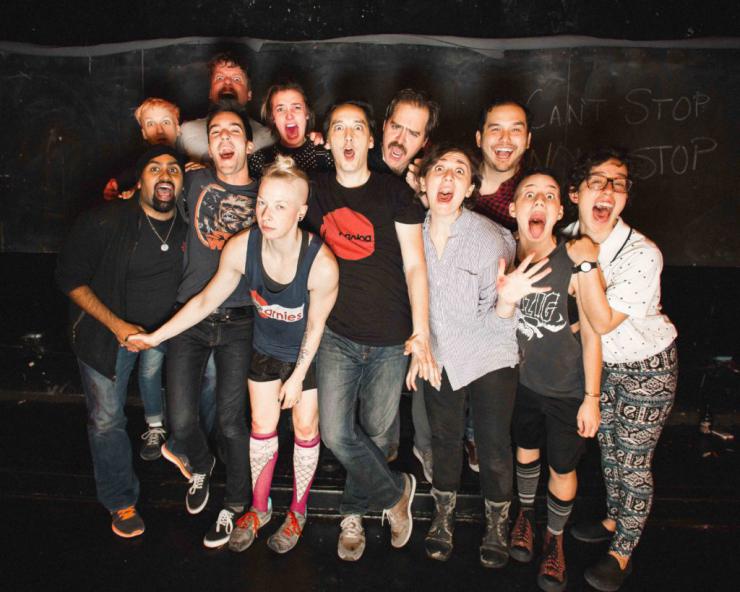
What you get when you see The Infinite Wrench is pure truth wedded to that classic eight-kids-in-a-garage poor-theatre kind of spectacle, multiplied by thirty. This could come off as smarmy, but it rarely does. On the contrary, nearly the only times I’ve been moved when watching theatre—I mean when something shifts, when I am brought close to a human being’s lived experience, the milkshake of pain, yearning, joy, befuddlement, and mystery we all feel but can’t always articulate—have been during the two-or-three minute works of art that make up the Wrench or Too Much Light.
They also make evening-length plays: “prime-time shows,” they call them, because they start at 7:30 p.m. They’re in essence Wrench plays that require more time, usually about a pert eighty minutes, yet still adhering to the principles of Neo-Futurism: momentum, truth, a lack of artifice, and direct communication—communion, you might even say—with the audience.
The Neos dispense with the fourth wall because it gets in the way. With it, you can’t tell the truth as keenly. If you leave it up but direct your speech toward the audience, you’re not really talking to anybody, because the fourth wall involves pretending that that audience isn’t really there. The stakes go slack. When everybody inhabits the space together, and all parties involved acknowledge this as the gambit, then we can begin to actually speak to one another—which is the entire reason we’ve assembled in the first place.
There’s nothing in Chicago like the Neo-Futurists.
Every Neo-Futurist evening begins with introductions. This is true of the Wrench, but also (in slightly modified form) of their two prime-time shows Tangles and Plaques and The Food Show.
At the Wrench, one Neo will call the room to order and rattle off the house rules. You have been handed a menu, it is a menu of plays, the plays have numbers; you call out a number and the Neos will perform the play. They have sixty minutes to do so, though there are also wrenches, which stop or alter the flow of the evening. “Sometimes,” they’ll say, “we will come into the audience.” And indeed, they do. “Sometimes we will talk to you, we might say, ‘Hi, what’s your name? What did you do today?’” And the paying audience member will answer, and the Neo will spin around to regard the room and announce “that was a lovely human interaction.” Back onstage, they mention the most important rule: “We will never play characters here: I will always be Ida,” says Ida, “and Kirsten will always be Kirsten, and Trent will always be Trent, and Jasmine, Leah, Lily. And just as we are always ourselves”—can you sense what’s coming?—“we ask that you always be yourselves.”
The play that any given Neo makes—they write all their own work, and premiere two to twelve new plays every week—whether it’s twenty seconds long or eighty minutes, originates in their lived experience and unique consciousness. Sometimes their self and identity is palpable and stated frankly; these are often very personal plays, like Malic White’s twelve, about the adult male fixation on teenage Millie Bobbie Brown and White’s own experience with assault. Sometimes they’re goofs, like Trent Creswell’s Non-Aerial Silks, a minute-long aerial silk show, except that Creswell, a Feldenkrais instructor, is not airborne, just balancing on a rehearsal cube.
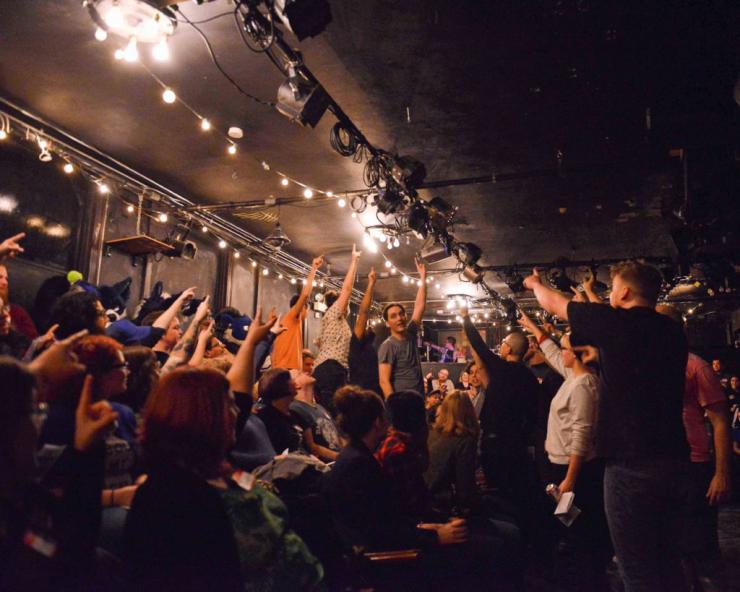
The Food Show, the first Neo prime-time production I saw after months of ardent Wrench attendance, played last summer in a warehouse space in Avondale. Dan Kerr-Hobert created and directed, though he didn’t perform. It was a freewheeling, summery kind of show. The audience sat on bleachers, wearing nametags with our dietary restrictions. The cast introduced themselves, as ever, and proceeded to tell their stories—and, this time, to cook simultaneously. Their “plays” (this show was more collaborative; there weren’t distinct plays or episodes, but at times the narrative did idle to focus on one particular performer) arose from the food they made on the mobile kitchen setup that served as the set. Tif Harrison talked about poaching eggs, her daily breakfast ritual, which originated during her time healing from a traumatic event. Oliver Camacho talked about his experience as a host in Chicago’s upscale restaurants, and how he’d recently noticed himself wooing men with food, men who were ultimately not interested in (or available for) more than a platonic, gustatory relationship.
Bilal Dardai’s story was the most memorable, and affecting, for me. He talked about preparing school lunches for his young son, an act that brought him joy but that was also a fraught enterprise: his child suffered from several fatal food allergies. Dardai moved from his lunch-making experiences to disruptions in the United States’ food ecosystems and the subsequent rise in food allergies and intolerances, the likely cause being human-induced climate change. I also learned, through Dardai’s segments, that meat consumption contributes massively to carbon emissions. As a result of his testimony, I’ve eaten less meat in the past year.
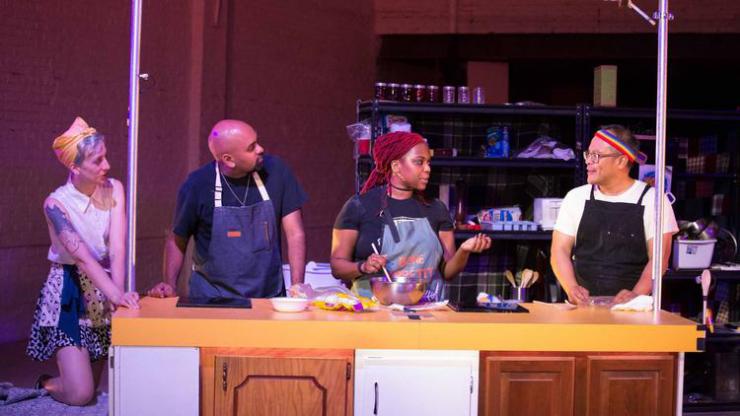
How did this happen? (Not the climate change; hoo nelly, that’s a different essay.) What I mean is—how do the Neos create a show that’s easy and pleasant like we Chicagoans want in the summer, our two-and-a-half months of paradise, yet also countenances difficult realities, and helps at least one audience member to change their behavior? My best theory is it’s the dropped facade: the crumbled fourth wall and the performers’ lack of pretense. Theatre made this way is a ritual for two groups of people—the knowledgeable performers and the audience hungry for their art and its information and sensation—to encounter each other in a dedicated space and transmit delight, facts, truth, and surprise.
This is what’s so very special about the Neo-Futurists: they care about their audience, care enough to tear down the walls and invite others in without armor.
Kirsten Riiber’s Tangles and Plaques operates the same way. Riiber appears in her own play (directed by Jen Ellison); this time, the subject is dementia and memory care, Riiber’s day job. Mere minutes into the show, Riiber (who starts by introducing herself and her collaborator, Alex Schwaninger), tells us that rates of dementia will increase dramatically over the next fifty years, and that the show that follows will be an investigation of what memory means and a demonstration of the techniques we might use (and which Riiber does use, on the residents of the home at which she works) to ease the daily pain of those living with dementia (who will eventually be, she implies, us and half of who we know).
The next “act” of the show is one big nostalgia trip for '90s kids, and it’s not all frivolous (though the pleasure imparted is deep—there’s something about communal rediscovery, the moment when a room full of twenty-eight-year-olds sees a commercial for the Skip-It for the first time since 1996; for better or worse, television raised us). In one of the more remarkable theatrical exercises I’ve seen executed by a Chicago theatre artist, Riiber and co. solicit a volunteer to tell the story of their first kiss, which the ensemble then recreates, giving the rememberer agency over casting and “direction” (“Ring this bell if what we’re doing gets close to what you remember, and honk this horn if we’re way off”). This returns the audience to the state of active participants and imbues the enterprise with a sense of play, but it’s also relevant to the greater, benevolent theme of the evening (memory care: we should all learn how to do it), not to mention capable of activating that emotional-milkshake feeling for the rememberer as well as the rest of the spectators (which includes the ensemble: this is new every performance, and we’re all watching it live).
This is what’s so very special about the Neo-Futurists: they care about their audience, care enough to tear down the walls and invite others in without armor. They have important stuff to teach us, but it’s wrapped up in theatre (novel, huh?) and play, and they know how to trigger moments of emotion without being manipulative. In a city full of lumbering capital-I Institutions and endless, rather boring new play development, the Neos are the rare spontaneous, ever-changing, tricksters on Ashland and Foster, above the chiropractic clinic.

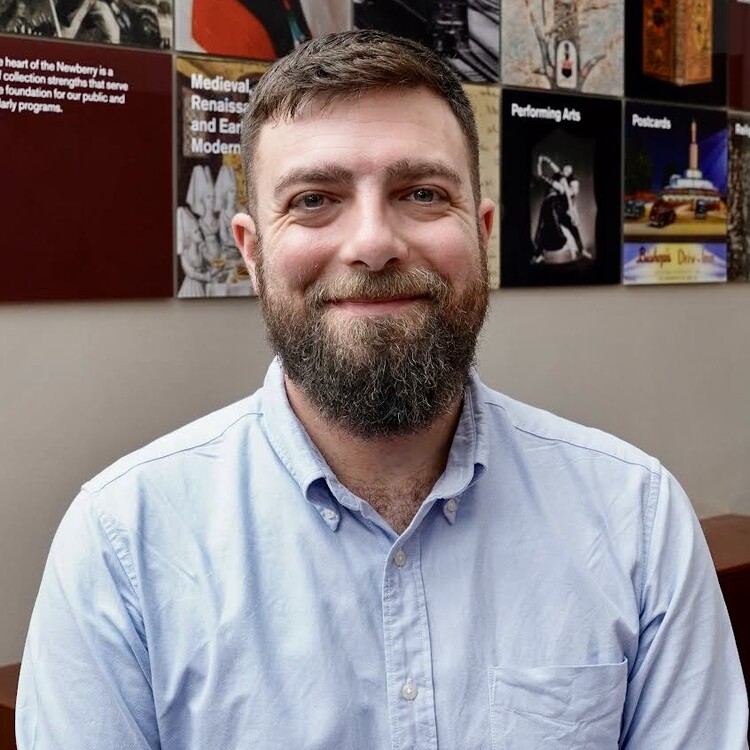

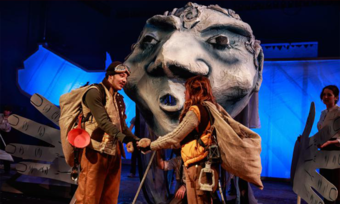

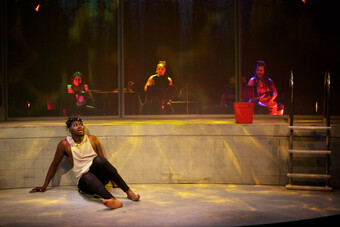

Comments
The article is just the start of the conversation—we want to know what you think about this subject, too! HowlRound is a space for knowledge-sharing, and we welcome spirited, thoughtful, and on-topic dialogue. Find our full comments policy here